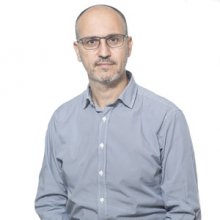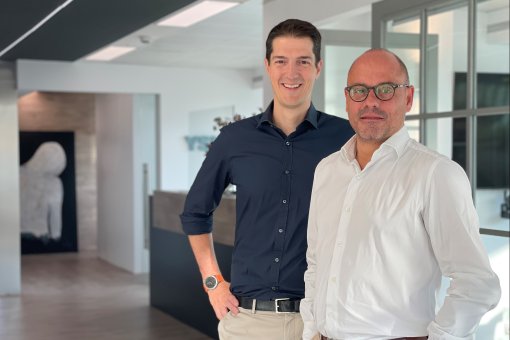Images
Participants

Contact

On Friday 6 March in a conference at the CCCB, researcher Xavier Salvatella will explain the excellent moment being experienced by research into rare diseases.
Salvatella will present the breakthrough in his lab regarding Kennedy’s disease, a rare muscular atrophy that affects 1 in 36,000 men. “In five years’ time we could have a candidate drug tested in cells in vitro.”
This is the first of four conferences in the “Science today for the medicine of the future”, proposed by IRB Barcelona to explain the close link between basic research and medicine of the future, held on the occasion of the 10th anniversary of the centre.
On Friday 6 March at 19h in “Centre de Cultura Contemporània de Barcelona” (CCCB), Xavier Salvatella, ICREA researcher at the Institute for Research in Biomedicine (IRB Barcelona) will give a public conference (free of charge) on rare diseases. In a presentation entitled “Kennedy’s disease, an example of new scientific research approaches to understand rare diseases”, Salvatella will explain the changing scenario of rare diseases, exemplified by studies on Kennedy’s disease performed in his basic research lab—a line of investigation launched in 2010. “Governments in Europe and US are encouraging the pharmaceutical industry to invest in rare diseases by accelerating, for example, the process of approving new drugs, and this stimulus has a positive rebound effect on basic research labs like ours. There is a lot of possible and achievable research that will favour the identification of therapeutic strategies for orphan diseases,” says Salvatella.
His “Molecular Biophysics Lab” at IRB Barcelona started research into Kennedy’s disease with funding from the TV3 Telethon in 2010 and continues this line of investigation with resources from the National Research Plan of the Spanish Government. To date, the results are “quite positive and for 2020 we could have a drug tested in cells in vitro,” he explains.
Kennedy’s disease
Muscular spinal bulbar atrophy or Kennedy’s disease is a rare degenerative hereditary condition that affects only men, approx. 1 in every 36.000, and has no treatment. Described in 1968 by the neurologist W. R. Kennedy, this disease causes the accumulation of aggregates of a protein called the androgen receptor, which are toxic for motor neurons and muscle cells.
Although the origin and symptoms of this disease have been extensively described, there was a lack of knowledge about the nature of the toxic aggregates and how they form, thus impeding progress towards a drug. Salvatella’s lab is devoted to the study of protein folding and unfolding, and Kennedy’s disease is a pathology due to the misfolding of the androgen receptor. “There were no methods available to study the aggregation of this protein, nor the underlying biological problem at the molecular level. In five years, we have made significant progress in this issue, we know the mechanism of formation of the toxic aggregates and soon we will start work on designing new drugs,” explains the researcher, who adds that, “our case is an example of how a good environment can give rise to opportunities to rapidly further our understanding of rare diseases.”
The conference on Friday will be the open the series “Barcelona BioMed Perspectives”, given by IRB Barcelona at CCCB, in the framework of IRB Barcelona’s 10th anniversary celebration (2005-2015).
Under the title “Science today for the medicine of the future”, IRB is offering public talks to raise awareness of the advances and challenges faced by researchers with respect to the medicine of the future. The conference series includes sessions on Cancer and metastasis (27 May), Alzheimer’s disease (17 September) and Diabetes (5 November).
RELATED VIDEO, IRB BARCELONA YOUTUBE CHANNEL: A NEW HANDLE IN KENNEDY'S DISEASE (2011)
About IRB Barcelona
The Institute for Research in Biomedicine (IRB Barcelona) pursues a society free of disease. To this end, it conducts multidisciplinary research of excellence to cure cancer and other diseases linked to ageing. It establishes technology transfer agreements with the pharmaceutical industry and major hospitals to bring research results closer to society, and organises a range of science outreach activities to engage the public in an open dialogue. IRB Barcelona is an international centre that hosts 400 researchers and more than 30 nationalities. Recognised as a Severo Ochoa Centre of Excellence since 2011, IRB Barcelona is a CERCA centre and member of the Barcelona Institute of Science and Technology (BIST).




